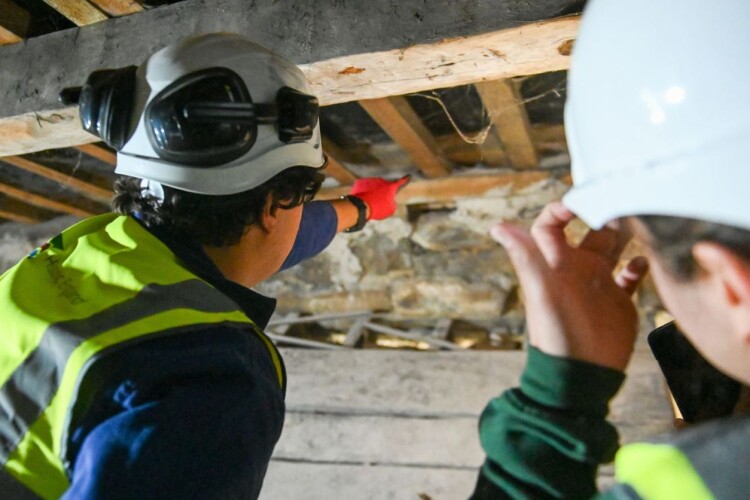
On the basis that the most sustainable building is the one that already exists, we need to look after our old buildings and make them less carbon hungry. This means retrofitting modern features onto them, like insulation, double glazing and heat pumps, as sympathetically as possible.
Approximately 6.5 million buildings in England, Scotland and Wales were built before 1919 – around 20 or 30% of all buildings in the UK. That is a lot of retrofit work required in the battle to reach net zero.
Adaptation is also critical to ensuring traditional buildings are resilient to climate change impact.
However, there are known knowledge and skills gaps in the workforce expected to work on these buildings. Only 28% of respondents to Historic England’s recent skills needs analysis are confident that existing training provision for work on traditionally constructed buildings will give tradespeople the skills they need to install low carbon and energy efficiency measures.
Therefore Historic England, Historic Environment Scotland and their Welsh equivalent, Cadw, have been working together to improve the standard of retrofit training in response to known skills and knowledge gaps in the workforce.

A particular focus of this work is a qualification that centres on buildings of traditional construction. The Level 3 award in energy efficiency measures for older and traditional buildings plays a role in disseminating heritage knowledge to the retrofit workforce. It is a requirement for certain retrofit roles under PAS2035 and PAS2038 – the industry standards that set out good practice for retrofit interventions – where buildings being treated are of traditional construction.
The three organisations have together produced a new text book for learners undertaking the Level 3 award or other retrofit qualifications. It is designed to be used as an additional resource to support training delivered by registered providers.
Ian Morrison, director of policy & evidence at Historic England, said: “This collaboration with Cadw and Historic Environment Scotland demonstrates our commitment to ensuring that our historic buildings play a key role in tackling climate change. By improving the standard of retrofit training, we are ensuring that our historic buildings can be made energy efficient and climate resilient while preserving their unique heritage.”
Gwilym Hughes, head of Cadw said: “This collaborative handbook is a significant milestone in our shared commitment to preserving traditional buildings while addressing the urgent challenge of climate change. Our historic buildings can and should be part of our journey to net zero and this partnership demonstrates how the UK’s heritage bodies are working together to champion practical, sensitive approaches to adapting our most treasured buildings.”
David Mitchell, director of cultural assets at Historic Environment Scotland, said: “There is no route to net zero without viewing the buildings we already have as assets. The retrofit of these traditional buildings has the potential to bring many wider gains, including economic and employment opportunities as well as environmental benefits. To deliver these, it’s crucial we are able to develop and deliver vital skills training to ensure we have a workforce equipped to undertake retrofit in a way that works for both buildings and their occupants.”
Got a story? Email news@theconstructionindex.co.uk
#Heritage #bodies #produce #retrofit #training #manual